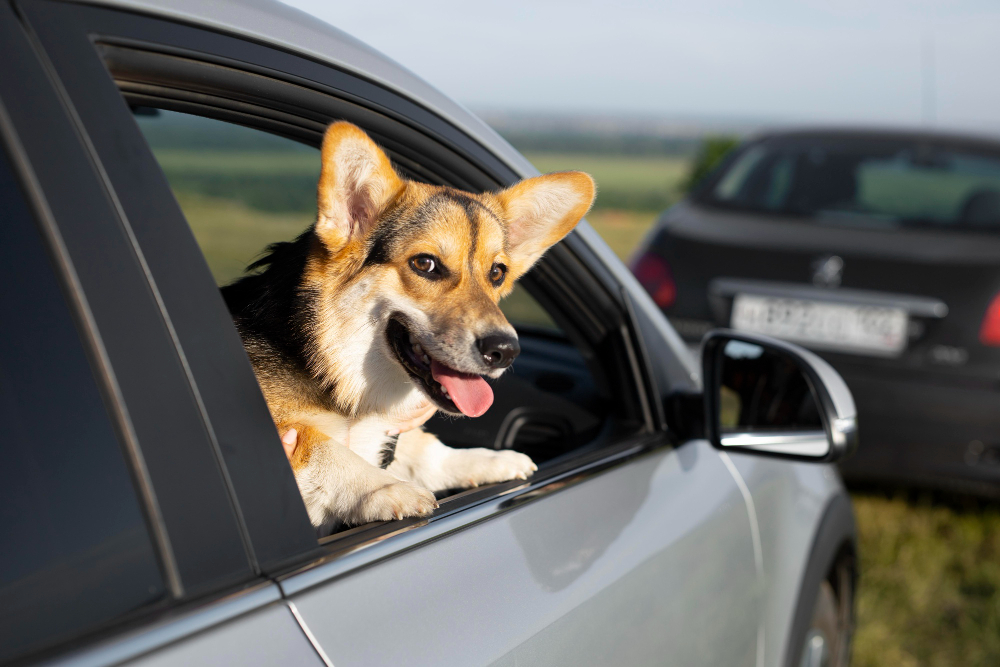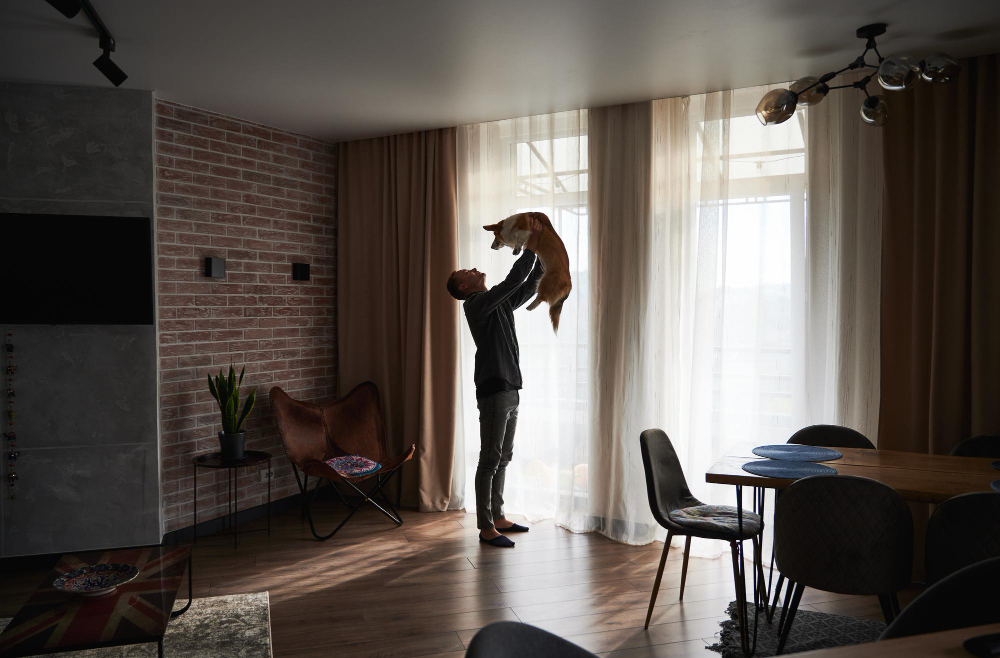Tips for Moving With Pets to your New Home

If you have a pet, you understand how much you adore them. So, when moving day approaches, don’t forget about these crucial family members! Normal routine and familiar surroundings that pets love provide comfort to our four-legged and feathered pals, and moving is the ultimate upheaval. Fortunately, there are numerous actions you can take to ensure that your pet goes through the transition as smoothly as possible.
A well-thought-out plan will alleviate your stress during the stressful process of packing and transferring your household, resulting in a happier, simpler transition for everyone.
Ways to Make Moving with Pets in your New House Easier
To prevent stress on your pet, avoid disrupting your routine.
Animals, particularly dogs and cats, are creatures of habit. The more your schedule varies, the more anxious they are going to become.
If you’re on a roll with packing or arranging your to-do list, it can be tempting to forgo the daily routines with your pets, but the slight disruption to your flow now can pay off with a happier pet in the long term.
To keep your pet’s stress levels low in the weeks preceding up to relocating (and, if possible, on moving day itself! ), do the following:
- Feed them at regular times with their favorite food and water bowls.
- They should never miss their usual walks or playing in dog park.
- Give them extra love and patience: they are stressed as well!
Prepare your pet for packing supplies and boxes.
Many pets enjoy playing with packaging goods… after all, who doesn’t appreciate the unending amusement of an empty box or some rippable tissue paper? Start packing early to let your dogs get acclimated to having boxes nearby.
If you have the space, begin stockpiling boxes several weeks before your move. Fill the boxes with less often used goods and leave them open. Your pets may be inquisitive at first, but they will quickly abandon them.
Conditioning your pets ahead of time reduces disturbances and box attacks as moving day approaches and packing begins in earnest.
Maintain a nice, secluded area for your pet.
Moving can rapidly turn your once-organized home into a mountain of chaos with boxes, piles of clothes, and half-assembled furniture. While some messes are unavoidable, keeping at least one space neat and pleasant for your pet during the moving process is essential for a happy pet.
It is essential to have a tiny room, corner, or even an open closet where they can retreat when the chaos overwhelms them, especially for cats and dogs.
It’s ideal to have a friend, or family member, or find pet-friendly hotels to babysit your pet for a couple of days while you move, but that doesn’t always work. If you have pets, make it a priority to prepare your pet’s space first when you arrive at your new home. Place their blanket, cage, or crate in a comfortable location away from the chaos of the relocation, but not so distant that they can’t hear you. You don’t want them to feel abandoned in a strange new environment.
Consider putting dogs and cats in a room with a door that can be locked during move out and move in, because the front door will most likely be open a lot as you carry everything inside. The last thing you need is another dog unattended that later on may be an escapee to chase down during your already long day.

Keep your pets occupied.
You’ll be busy when you’re moving to your new address, but making time to entertain and exercise your dogs or any exotic animals that you have is crucial. Burning off all that worried energy is one of the finest antidotes to stress! A weary pet is a tranquil pet, making the entire move more peaceful for everyone.
If you are simply too busy to get in an extra walk or play session, consider enlisting the assistance of a buddy to assist you and take your furry companion on some outside playdates in your new space. Dog walking services are another excellent method to get your pet some exercise and time away from your hectic household.
For cat owners, consider employing brain games to keep their pets entertained in addition to other methods. They will be less likely to become bored and misbehave, and you will have more time to focus on other activities.
If you’re moving to a new city, learn about new pet rules.
If you move to a new city, you don’t want to be caught off guard by a leash, cat carrier, and pet rules! Do your homework ahead of time so you know what to expect. If you’re moving into a new apartment, it’s critical to understand the pet policies for your lease. The last thing you want is to be turned away because you have a pet!
It is a good idea to have fresh pet tags produced before moving. If your pet is microchipped, make sure to keep their information up to date online.
To keep your pet safe, secure them and keep them close.
Doors will be left open during the moving process, and people will be coming and departing in your new neighborhood. Keep your pets safe in one room so that they do not flee out of fear or bewilderment. Place them in a kennel in a calm area of the house or in a more permanent location.
Do not leave your dog unsupervised in the backyard of your new house while you are moving in! Have a recent photo and updated tags/microchips on hand in case they escape.
Pack an emergency relocation bag just for your pet.
Reduce the stress of moving for both you and your pet by packing and having all of your pet’s requirements and familiar objects on hand especially if you will have a long-distance travel time. Water bowls, a litter box, favorite toys, a blanket, food, treats, kitty litter, and other necessities are wonderful places to start.
To assist with unexpected clean-ups for your furry friends, keep a roll of paper towels and disposable plastic bags on hand.

Pet-proof your new house before bringing your pet in.
New surroundings can provide unanticipated dangers to your pet. Follow these pet-proofing guidelines to ensure their safety in their new home:
- All screens, windows, gates, and doors should be secured.
- If you have a balcony, be sure your pet cannot squeeze through the railing or jump over it.
- Examine outdoor barriers for possible escape routes.
- Make certain that all vents are covered.
- Close toilet lids to prevent tiny pets from falling in, and dogs from drinking water that may contain chemicals.
- Look for any pest control traps or poison that may have been abandoned.
- Plants can also be harmful, so inspect your yard and remove or isolate any plants that could harm your pet.
- Don’t just look for the obvious! Mothballs, firestarter sticks, and electrical cords are just a few examples of things that can damage your pet.
Contact your veterinarian.
Vets are experts at assisting pets in dealing with stressful situations especially because most pets dislike their visits! They are a great resource for inquiries regarding lowering your pet’s anxiety weeks leading to your move date.
It’s a good idea to schedule an appointment with your veterinarian at least two weeks before you move so you may conduct the following to your cats, guinea pigs, exotic animals, and other dogs:
- Check that all vaccines are current and receive a rabies vaccination certificate (if needed).
- Make sure your pet is in good health and that any regular prescriptions are up to date so that you are less likely to have to make an emergency visit during your busiest time.
- Discuss potential stress-reduction techniques or anxiety-relieving substances.
- Obtain a copy of your pet’s medical records.
- Get a referral for a new vet in the area.




